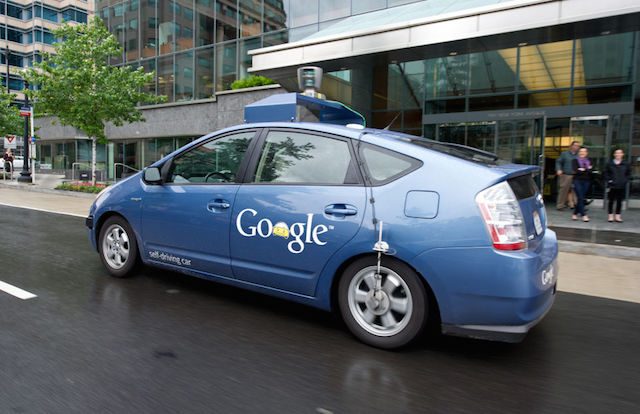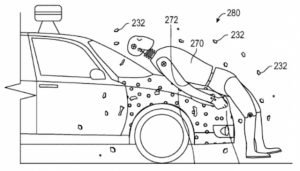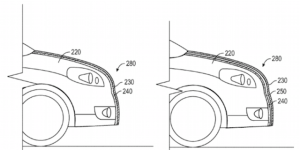
Those 140 pedestrians fined by NZ police last year for making dumb choices while crossing roads busy with traffic?
It’s in the Herald on Sunday. Road policing operations manager Peter McKennie told the newspaper that most pedestrian injuries or deaths could be easily avoided.
“The main risk factors are pedestrians not paying attention to the traffic, being distracted by mobile phones, wearing headphones and not hearing the traffic, misjudging the speed of traffic or visibility being obstructed by parked vehicles, trees and other objects,” he said.
Self-styled road safety fellow Clive Matthew-Wilson said pedestrians and motorists should be kept physically apart. He then added some nonsense about Bangkok and fences.
But the answer is there for all to see. It’s in the office of the US Patent & Trademark people. It’s Google’s human flypaper.

The technical giant has come up with a design for a sticky car bonnet that would “nearly instantaneously” glue pedestrians to the car.
That way they wouldn’t suffer further injuries, apart from the initial impact. No somersaulting though the air and landing on the road. No sickening secondary thump into the car’s windscreen.
There they are, stuck fast to the bonnet, on a sticky substance that would also help to cushion their landing. Sort of a posturepedic effect. That’s the theory anyway. Google has filed the design with the US Patent office.
But hang on, the stuff has to be the daddy of all superglues in order to pin a pedestrian to a fast-moving car’s bonnet. All in the blink of an eye, too.
Google’s got that covered. Something in the glue would cause it to let go of the pedestrian after a minute or two.
The patent is not saying what exactly. Just that: It would be “desirable to have the adhesive coating release after a short period of time to allow for the removal of the pedestrian from the vehicle”.
Makes sense – wouldn’t want the glue to be exposed too long to air and set like concrete. Emergency services would have to chip the pedestrian off the car.

Google wants to conceal the adhesive under an “eggshell-like” outer coating, which would shatter into tiny pieces upon impact to release the sticky undercoat.
But what happens in a head-on collision with another car? Would the stuff splatter everywhere and somehow stick the cars together? No, because the patent specifically covers Google’s self-driving cars. And Google’s self-driving cars don’t run into each other.
They might run into other cars – and they have. A driverless Google car side-swiped a bus in California. Google does concede that, despite it working on smart cars that can prevent collisions, “on occasion, collisions between a vehicle and a pedestrian still occur”.
What about a hail storm? Or vandals using a hammer to pop the eggshell coating like bubble wrap? Would the owner then call a panelbeater or a plastics engineer?
The patent doesn’t have answers. Google might never even make the sticky stuff. But it might be on to something, says an Australian road safety expert.
Monash University’s Maxwell Cameron says that while there have been developments by carmakers to protect pedestrians — such as bonnets that are more pliable upon impact — the focus has generally been on the car’s occupants.
The Google design, if successful, would be a significant development for a major issue in pedestrian safety.
“We refer to pedestrians being run over, but in fact they usually fly through the air … and are somersaulted and injured when they land,” Professor Cameron said.
“It’s an interesting claim (Google’s design) because if there’s a way of catching the pedestrian to avoid them going though the air then that’s a good thing.”
